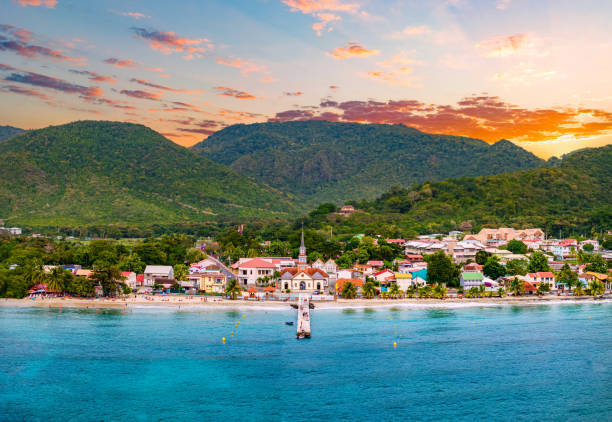
When to visit Martinique: Complete guide to seasons, events and traditions
08/28/2025 0 By Nathalie de Beyond the Beach Martinique, nicknamed Madinina – “the island of flowers” – proudly bears its name thanks to its exceptional landscapes and remarkable biodiversity.
In the north of the island, the tropical forest unfolds its lush, wild vegetation, providing an ideal setting for hiking and exploration.
To the south, the panorama changes: vast banana plantations, sugarcane fields, heavenly beaches, and turquoise waters.
Martinique also captivates with its rich historical heritage, with its Creole dwellings, ruins steeped in history, and botanical gardens, witnesses to the island’s past.
Martinique’s climate: two seasons, a year-round destination
Thanks to its hot and humid tropical climate, Martinique can be visited at any time of year.
There are two main seasons:
- The dry season (Lent) – from December to April: temperatures between 20°C and 26°C, optimal sunshine, and a pleasant atmosphere. This is the peak tourist season, ideal for enjoying beaches, water sports, and cultural events.
- The wet season (wintering) – from June to November: temperatures between 23°C and 30°C, a warmer and more humid climate, with an increased risk of cyclones. This is the low tourist season, offering more attractive prices and a quieter island.
What to do in Martinique during the peak tourist season?
- December to April: Sun, culture, and festive events
- January: Mild and dry climate, perfect for an active vacation. This is also the month of the Martinique Cata Raid, a sport catamaran race offering a unique nautical spectacle. Sundays are punctuated by the first parades of the Carnival, an unmissable tradition on the island.
- February: The Martinique Carnival is in full swing for four days of costumed parades, music, dancing, and drumming in the streets of Fort-de-France. The highlight is Ash Wednesday with the burning of King Vaval.
- March: Lent (40 days), marked by a very dry climate and a calmer atmosphere, conducive to cultural and religious discovery.
- April: Easter is an opportunity to discover crab matoutou, a traditional dish prepared after crab hunting in the mangroves. Religious processions such as the Stations of the Cross combine spirituality and discovery of the landscapes.
May: History and Local Flavors
In May, Martinique celebrates its tropical fruits (mangoes, lychees, passion fruit, etc.).
Two dates have a profound impact on the island’s history:
- May 22, 1848: Abolition of slavery, an important commemorative day.
- May 8, 1902: Eruption of Mount Pelée, destroying the town of Saint-Pierre. The Memorial Museum of the Catastrophe retraces this event and highlights volcanology.
What to do during the low tourist season in Martinique?
- June to November: Lush nature and authentic atmosphere
June: Warmer temperatures, landscapes colorful with blooms. It’s also the international hiking festival, ideal for exploring rivers and waterfalls. - July: The Tour des Yoles, a seven-stage traditional boat race, draws crowds. The beaches transform into festive venues.
- August: Between concerts at the Baccha Festival in Le Vauclin and the friendly La Ronde des Caps race in Sainte-Anne, the atmosphere is festive.
- September & October: Less touristy months, perfect for taking advantage of reduced prices and a quieter Martinique, despite the occasional shower.
- November: All Saints’ Day in Martinique: cemeteries are lit with candles, offering a unique spectacle.
December: Christmas with Creole colors
- In December, the air is fresher and the island comes alive with Christmas carols: songs, dances, and traditional meals (savory pies, Christmas ham, etc.). An ideal time to discover Martinique’s warm hospitality and spend unforgettable holidays in the tropics.
In Summary Whether you visit during the high or low season, Martinique offers a unique blend of nature, culture, gastronomy, and festive events. Between dream beaches, vibrant traditions, and breathtaking landscapes, each time of year reveals a different side of the island of flowers.

